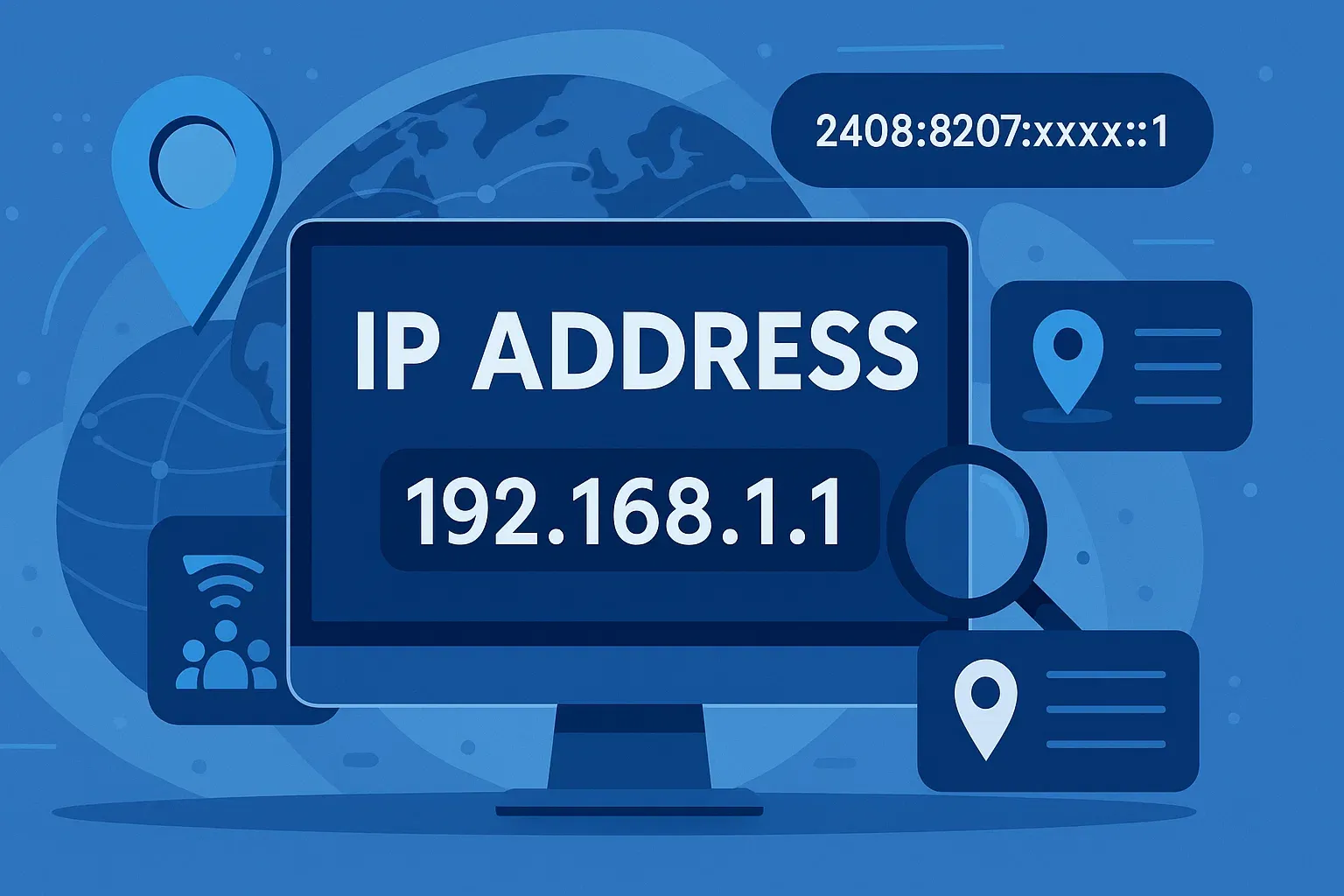ToDetect Browser Fingerprint Detection Tool provides comprehensive network information analysis, including:
What is an IP address leak? How to prevent your real IP from being exposed?
In the digital age, almost every online action is closely related to an IP address. Whether browsing the web, logging into social media platforms, or conducting internet speed tests, your device needs to communicate with the internet through an IP. However, many people do not understand that an IP address itself is a form of "online identity," which can reveal your geographical location, internet service provider, browsing method, and may even expose your privacy. When your real IP address is inadvertently leaked, personal data and online security may be threatened.

I. What is IP address leakage?
In simple terms, an IP address leak refers to a situation where, despite believing that your real IP is hidden or protected, your device still inadvertently exposes the true network address to external websites or applications.
For example:
When you access a website using a proxy, corporate network, or privacy tools, the website should only see the IP of the proxy or relay node. However, if there are vulnerabilities in the browser or system configuration, the true public IP may still be detected by the website. This phenomenon is known as IP address leakage.
IP leakage is not only a technical issue but also a privacy risk. Hackers, advertising tracking systems, and even some website service providers can use this information to build your "digital profile" and track your behavior patterns.
II. Common Types of IP Leaks
There are several typical forms of IP leakage, each with different technical reasons behind them:
- WebRTC Leak
WebRTC is a browser communication protocol used for functions such as video calls and file transfers.
Even if you use a proxy or encryption tunnel, certain browsers may still directly expose your local network IP when running WebRTC. - DNS leak
When a device accesses a website, it will query the DNS server for the IP corresponding to the domain name. If the query does not go through a proxy channel but directly sends a request to the local network operator, it will lead to DNS leakage, allowing the real network to be identified. - IPv6 leak
Many users' proxies or encryption tools only handle IPv4 communication and ignore IPv6.
If the device has IPv6 enabled, the website may directly obtain the real address through the IPv6 channel. - Application Layer Leakage
Some programs (such as email clients and download software) may bypass the system proxy and establish connections directly. This behavior often occurs in the background, and users are hardly aware of it.
III. Why is IP address leakage dangerous?
An IP address may seem like just a number, but the information it reveals goes far beyond what one might imagine:
- Geolocation information: country, province/city, operator, and even city-level coordinates.
- Equipment source: determine whether it is residential broadband, enterprise dedicated line, or data center node.
- Behavior analysis: By combining browser fingerprints and cookies, your usage habits can be inferred.
- Security risks: Attackers can launch precise attacks by leveraging IP location, or further obtain private data through social engineering techniques.
More importantly, many websites or services assess the "credibility" of visitors based on their IP addresses.
If the system detects a VPN or proxy IP associated with multiple accounts, it may be considered a "suspicious login," leading to account verification or suspension.
IV. How to check if your IP has been leaked?
- Public IP, geographical location, and network type;
- Support for IPv4 / IPv6.
- DNS query and routing path;
- Encrypted proxy, proxy relay identification;
- Browser fingerprinting, operating system information detection.
Through these test results, you can clearly see:
→ Whether my current network environment is secure;
→ Do VPNs or proxies really hide the real address?
→ Which protocols or functions may pose a risk of leakage?
V. How to effectively prevent IP address leaks?
Here are several proven protective measures to help you minimize the risk of IP exposure:
- Disable WebRTC or use a secure extension.
Disable WebRTC in the browser settings, or use specialized privacy protection plugins (such as WebRTC Leak Prevent). - Use a reliable privacy connection service.
Not all encrypted channels truly hide the IP. It is especially important to choose encrypted tools that have leak protection mechanisms and support IPv6. - Manually verify if DNS is using a proxy.
Check the source of DNS queries using detection tools to ensure it does not bypass the proxy. - Disable unnecessary IPv6.
If your network proxy does not support IPv6, you can temporarily disable IPv6 to prevent your real address from being exposed through that channel. - Regularly check and clear the browser cache.
Clearing Cookies, fingerprint data, and browsing history can prevent websites from tracking you over the long term. - Avoid installing plugins or software from unknown sources.
Some plugins may secretly initiate external requests, thus bypassing the proxy and leaking the IP directly.
VI. Advantages of the ToDetect Browser Fingerprint Detection Tool
Compared to general IP query tools, the ToDetect browser fingerprint detection tool can not only display your public IP but also:
- Identify network types (residential, IDC, proxy, enterprise dedicated line, etc.);
- Determine whether to use an encrypted channel or relay access;
- Simultaneously detect IPv4 and IPv6 environments;
- Display system-level information such as DNS, ASN, time zone, language, etc.;
- By combining browser fingerprint analysis, users can gain a more comprehensive understanding of their online exposure.
For users pursuing privacy security, cross-border work, or development and debugging, this detection can visually display "how the outside world sees you," allowing for a precise assessment of privacy risks.
VII. Conclusion: Take Control of Your Online Identity
In the internet environment, privacy has never been absolutely secure.
As long as you understand the principles of IP address leakage and master the correct protective measures, you can effectively reduce the risks.
Whether you are an ordinary user or a cybersecurity professional, understanding your online identity and regularly checking your IP information is the first step in maintaining online privacy.
By using the ToDetect Browser Fingerprint Detection Tool, you can clearly see the network information your device exposes externally, identify potential leakage channels, and become more aware of protecting your digital footprint.
There is no absolute anonymity in the online world, but with the right tools and understanding, we can navigate the digital space more safely.



